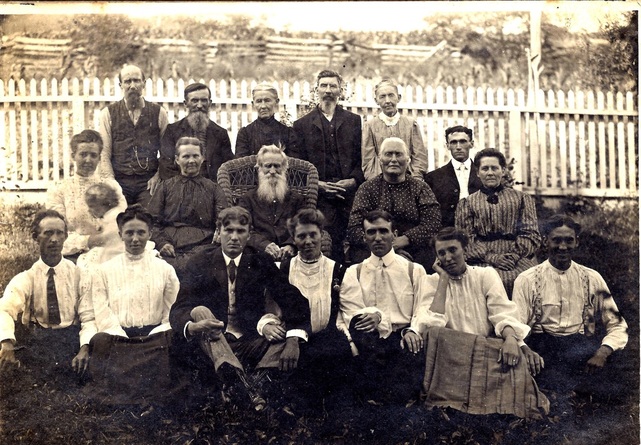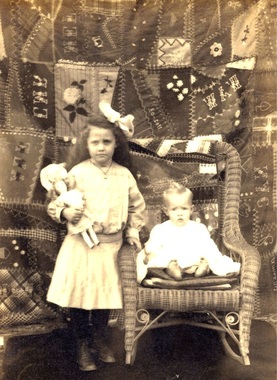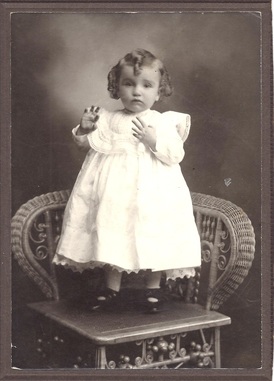Introduction

This book is dedicated to the memory of John C. Wikel, to the
people
he photographed in the early 1900s, and to their ancestors who
continue to perpetuate their history and heritage today in the
community of Buck, along Little Wolf Creek, in the County of
Summers, in the state of West Virginia in the United States of America.
he photographed in the early 1900s, and to their ancestors who
continue to perpetuate their history and heritage today in the
community of Buck, along Little Wolf Creek, in the County of
Summers, in the state of West Virginia in the United States of America.
Glenna Harvey Saunders
Glenna Harvey Saunders and I first met in 2008 when I was working on a book about the barns in Summers County, West Virginia. When I began canvassing the area, I soon learned that if I wanted detailed, specific knowledge of the area around Little Wolf Creek, I needed to contact Mrs. Saunders. My cousin, Joyce Waltman, and I visited Glenna in her home in Beckley, West Virginia to learn what we could from her. Joyce was a valued partner in the barn project.
Already in her 90's, Glenna's keen mind was astonishing. She shared many stories about the people of Little Wolf Creek, along with stories about the vernacular structures in that area. Then she brought boxes of photographs from her
storage area, we were mesmerized and a bit overwhelmed with the number of photographs she had saved. While many people had been identified in writing, her recollection of names, places, and events was impressive and became invaluable to this publication.
Glenna graciously allowed me to take several of the photographs to include in my book, "Barns of Summers County, West Virginia Heritage" published in November 2011. Pages 2 and 3 in the book are dedicated to these very special works.
After that book was published Glenna and I talked about the need to have a book about John C. Wikel and his photographs, to share them with the world. To remain stashed away in boxes seemed almost sinful and was unacceptable. It was determined we must follow our passion if we were to accomplish our goal in our lifetime. And we did!
I had over 300 prints to scan and catalog for her. From these files we have produced a book of around 240 of his photographs with many stories to accompany them.
Glenna and I hope you enjoy the book as much as we did compiling it. She will be 96 on October 21,2015 and I am not too many years behind her. We were following our passion. We hope you will find enjoyment in this chronicle of an extraordinary man and his photography of rural life in the early 1900s. The price is right for having several to give to special people that you know will treasure this book.....for future generations.
Glenna Harvey Saunders and I first met in 2008 when I was working on a book about the barns in Summers County, West Virginia. When I began canvassing the area, I soon learned that if I wanted detailed, specific knowledge of the area around Little Wolf Creek, I needed to contact Mrs. Saunders. My cousin, Joyce Waltman, and I visited Glenna in her home in Beckley, West Virginia to learn what we could from her. Joyce was a valued partner in the barn project.
Already in her 90's, Glenna's keen mind was astonishing. She shared many stories about the people of Little Wolf Creek, along with stories about the vernacular structures in that area. Then she brought boxes of photographs from her
storage area, we were mesmerized and a bit overwhelmed with the number of photographs she had saved. While many people had been identified in writing, her recollection of names, places, and events was impressive and became invaluable to this publication.
Glenna graciously allowed me to take several of the photographs to include in my book, "Barns of Summers County, West Virginia Heritage" published in November 2011. Pages 2 and 3 in the book are dedicated to these very special works.
After that book was published Glenna and I talked about the need to have a book about John C. Wikel and his photographs, to share them with the world. To remain stashed away in boxes seemed almost sinful and was unacceptable. It was determined we must follow our passion if we were to accomplish our goal in our lifetime. And we did!
I had over 300 prints to scan and catalog for her. From these files we have produced a book of around 240 of his photographs with many stories to accompany them.
Glenna and I hope you enjoy the book as much as we did compiling it. She will be 96 on October 21,2015 and I am not too many years behind her. We were following our passion. We hope you will find enjoyment in this chronicle of an extraordinary man and his photography of rural life in the early 1900s. The price is right for having several to give to special people that you know will treasure this book.....for future generations.
John C. Wikel and His Family
October 24, 1885 - February 13, 1983
John C. Wikel was born into a family of farmers. The first record of his great-great grandparents, George and his first wife Magdalena (Michael) Wikel, in the late 1770s, lived in Monroe County. The Wikels then migrated to Summers County to establish their home there , at the community of Buck, along Little Wolf Creek. The Wikels were hardworking people and thrived as farmers.
Pictures of his parents, his siblings (his favorite subjects),grand parents. great-grand parents, their home, community and many related stories are in this chapter.
John C. Wikel was born into a family of farmers. The first record of his great-great grandparents, George and his first wife Magdalena (Michael) Wikel, in the late 1770s, lived in Monroe County. The Wikels then migrated to Summers County to establish their home there , at the community of Buck, along Little Wolf Creek. The Wikels were hardworking people and thrived as farmers.
Pictures of his parents, his siblings (his favorite subjects),grand parents. great-grand parents, their home, community and many related stories are in this chapter.
John C. and his camera
In 1913, when West Virginia was celebrating 50 years of statehood John C. was already busy capturing life with his new camera in the community of Buck, along Little Wolf Creek.
Photographs of the camera as shown here plus his "dark room", and mode of transportation are depicted in chapter two along with a brief history of the camera and related stories.
Photographs of the camera as shown here plus his "dark room", and mode of transportation are depicted in chapter two along with a brief history of the camera and related stories.
All in a day's work
Families and neighbors worked together for the good of all. Everyone had their chores and accepted them as a way of life. Every family had stories of hard work and sacrifice. Their hard work and dedication is a reminder to all of these magnificent industrious West Virginia "Heritage Makers."
Eighteen photographs give a view of how hard these people worked. For example:
Eighteen photographs give a view of how hard these people worked. For example:
Building a foundation for a barn.
Working a sawmill.
Taking a rest from working the hay fields.
Savored Sundays
Sunday was a day of rest. Or it was supposed to be. When you live on a farm, then you first tend the animals, milk the cows, feed the chickens and hogs - all part of a normal days work. Then the Wikel family would be off, by horseback or buggy, over the mountain for the one-and-a-half mile trip, to the Mt. Zion United Methodist Church for Sunday services.
After dinner they would often set out for afternoon adventures.... baseball games, weddings, fishing on the Greenbrier River and other leisure activities. John C. was there to capture photos for his, and their pleasure and future generations. There are eighty photographs published to catch you attention. Here are a few:
After dinner they would often set out for afternoon adventures.... baseball games, weddings, fishing on the Greenbrier River and other leisure activities. John C. was there to capture photos for his, and their pleasure and future generations. There are eighty photographs published to catch you attention. Here are a few:
Witnesses to a river baptism.
Baseball was a popular sport for this group in 1916-17.
Young lovers.
Family fun.
High jinks in the bushes.
Hiking on the farm.
family gatherings
If it was an annual Homecoming or just a gathering of family and friends , it always called for a group photograph.
A Wikel family gathering.
The Lee Foster family.
school days
There are 14 photographs of schools and/or school groups in this book. Many names are known, many are not. Perhaps you can fill in missing names and share them with the author. The Summers County Historical Society is publishing a book of one room schools in the county and will be for sale soon. Mrs. Saunders offered these photos to the organization to include in their book as well as this one.
Turner School.
Buildings of note
A few examples of vernacular architecture are shared this section. There were not many photographs saved by John C., but those that we have are fantastic:
No electric tools were used on the Charles L. Woodrum Barn.
The Mastin and Malinda Wikel home photograph was made on demolition day. John C. was asked to photograph the events of the day. Notice the roof, log walls, and stone chimney.
additional significant images
With so many photographs in this Chapter they have been grouped as following:
important events
In this section you will find weddings, Civil War Confederate Veterans Reunion, post-mortem (Memorial) photographs, etc.
portraits of children
John C. found pleasure in pleasing friends and families with photographs of their children
photographs with animals
Farms would not have been as successful without the aid of the horses. Several are in the section titled "All in a days work". Other horses were used for riding or pulling buggies.
a few posed portraits
A sense of place
You will spend time with the John C. Wikel, his family and friends who lived in the Buck area around 1900. This section, with maps, early history of the county and facts about the area today, will give you a sense of place.

























